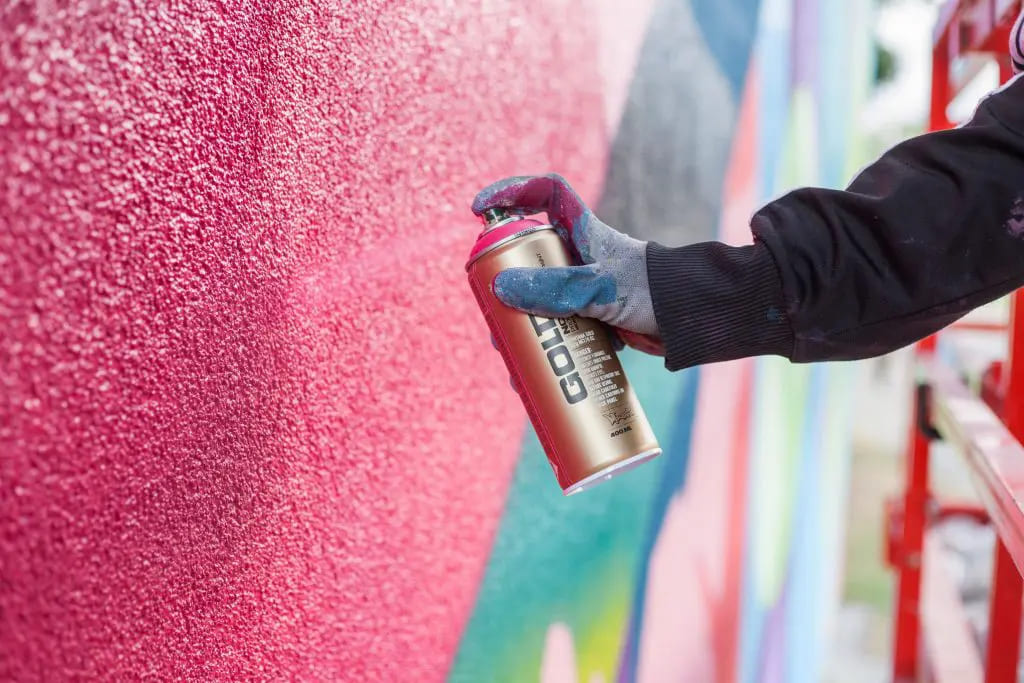The Best Guide to powder coat vs spray pain
Spray painting and powder coating are the two most commonly used technologies to protect metal surfaces, because metals are easily damaged by corrosion, scratches, etc. during use. In order to protect the metal surface, people use a variety of surface treatment technologies to protect the metal surface. These two methods have their own characteristics, advantages and disadvantages. This guide will introduce spray painting and powder coating in detail, and compare their characteristics to help you determine which method is more suitable for protecting your metal surface.
1.Basic introduction to spray painting
(1) Principle of spray painting
Spray painting involves spraying a liquid paint consisting of pigments, solvents and adhesives onto a metal surface using a spray gun to form a smooth and even coating. After the paint is sprayed, it will adhere to the metal surface and form a protective layer.
(2) Types of spray paint
Acrylic paint: distinguished by its fast drying speed and excellent weather resistance, it is a popular choice for outdoor applications.
Enamel paint: It can provide a hard and shiny coating on the surface of objects, and is suitable for machinery, vehicles and other items that require high durability.
Epoxy paint: has high adhesion and good chemical and moisture resistance, making it ideal for use on metal surfaces exposed to harsh environments.
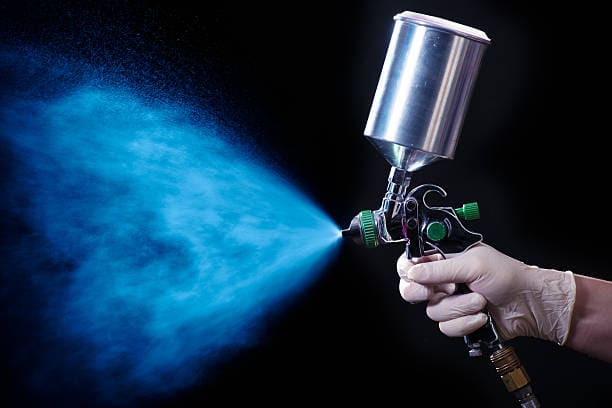
2.Advantages and limitations of spray painting
(I) Advantages of spray painting
Wide applicability
It can be applied to many types of surfaces, including complex-shaped objects and large metal structures.
Easy to apply and repair
Paint is easy to apply and can be applied by brushing, rolling or spraying, making it easy for both professionals and DIY enthusiasts to operate.
Cost advantage
In small-scale application scenarios, spray painting is more economical due to the lower cost of materials and equipment.
Customizability
It can provide a variety of colors and finishes (such as gloss, matte, satin) to meet diverse aesthetic needs.
Rich colors
It can be customized with a variety of finishes including gloss, semi-gloss, satin, matte, etc., and the color selection is extremely wide.
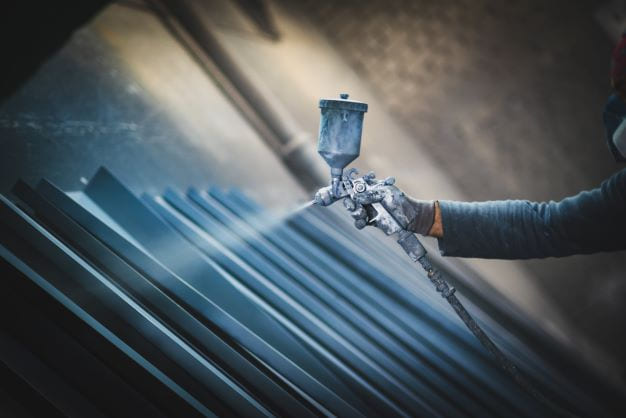
(II) Limitations of spray painting
Durability issues
Painted surfaces may not be as durable as powder-coated surfaces in high-wear areas.
Easy to crack
Paint is more prone to cracking, so it needs to be repaired and maintained frequently.
Limited texture selection
Compared with powder coating, paint generally offers fewer texture options, which may affect the final appearance.
Environmental Issues
Traditional liquid paints (i.e. wet paints) contain solvents that release volatile organic compounds (VOCs) into the environment during the drying process.
Longer Drying Times
Paint may take more time to fully dry and cure, which may have an impact on the project schedule.
3.Basic introduction of powder coating
(I) Principle of powder coating
Powder spraying is a dry finishing process. Specifically, a powder composed of finely ground resin and pigment is electrostatically sprayed onto a metal surface, and then the coated surface is heated in a curing oven to melt the powder, thereby forming a hard and durable coating.
(II) Types of powder coating
Thermoplastic powder
This powder has the characteristics of being able to be melted and reshaped many times, with good flexibility and impact resistance, and is often used in automotive parts and heavy metal objects.
Thermosetting powder
Once cured, thermosetting powder coatings form a permanent, inflexible surface with excellent heat and chemical resistance, and are widely used in household appliances and industrial equipment.
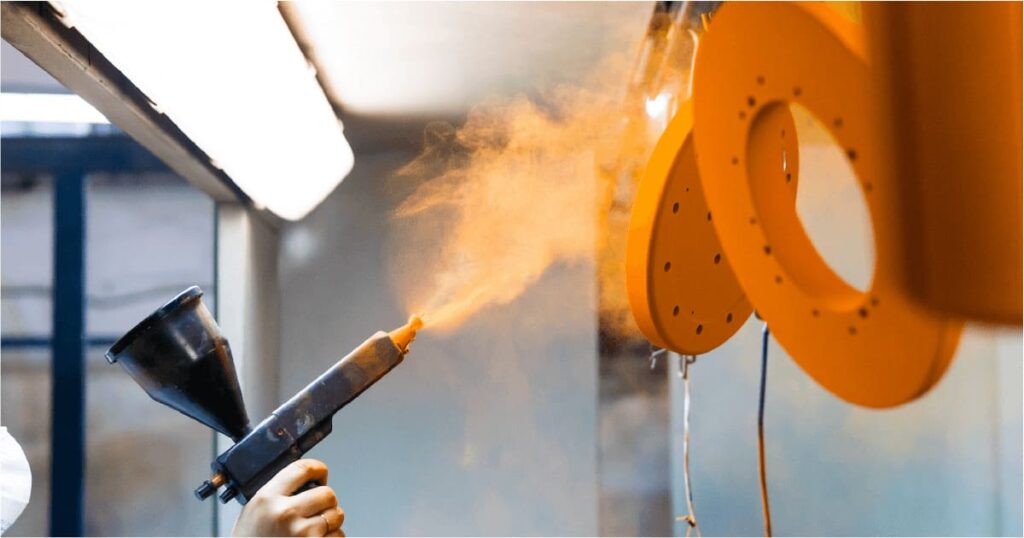
4.Advantages and limitations of powder coatings
(I) Advantages of powder coatings
High durability
Powder coatings can form a tough, chip-resistant surface, which has excellent protection for surfaces exposed to severe wear or harsh conditions.
Superior environmental performance
Compared with spray painting, powder coatings do not emit volatile organic compounds (VOCs) during the construction process and generate less waste.
Uniform and thick coating
Spraying is done electrostatically to form a uniform coating even on the surface of complex shapes.
Durability
The final coating of powder coatings is highly resistant to damage caused by impact, chemicals and environmental factors, can withstand harsh conditions, and is suitable for outdoor applications.
Strong resistance to chipping, fading and corrosion
The powder coating surface performs well in terms of resistance to chipping, fading and corrosion. Unlike traditional coatings that may chip or peel over time, the strong bond between powder coating and the substrate can ensure long-term protection and aesthetic effects.
(II) Limitations of powder coatings
Thickness and texture are difficult to control
It can be challenging to achieve a specific thickness or texture using powder coatings. Thick coatings may result in an uneven surface or poor adhesion, and achieving certain textures may require specialized equipment and techniques.
High Complexity
Powder coatings require specific equipment and expertise to apply, making them less suitable for DIY applications. Specialized equipment and facilities are often required to achieve the best results.
Five major differences between powder coat vs spray pain
(I) Durability and protection
Spray painting: Although some spray paints (especially epoxy spray paints) have good moisture and UV resistance, they may still peel, fade or corrode over time, so regular maintenance or repainting may be required. Its protective properties are more suitable for moderate conditions.
Powder coating: It has excellent durability, and its thick and uniform coating can effectively prevent scratches, chipping and corrosion. The curing process ensures the durability of the coating, which is very suitable for metal surfaces exposed to extreme weather, chemicals or frequent use. Powder coating is a better choice for maximum resistance to wear, corrosion and harsh environments.
(II) Construction process comparison
Spray painting: The construction process is relatively simple, with less preparation work, suitable for small or complex projects. However, it takes some skills to obtain a uniform coating, and the drying time varies depending on the type of paint.
Powder coating: Special equipment is required, such as electrostatic sprayers and curing ovens, which makes its construction process more complicated and difficult to operate for small or DIY projects. However, the curing process dries faster than liquid paint, so it can improve efficiency for large-scale application projects. Spray painting is convenient to use in small, detailed projects, while powder coating has high equipment requirements but is more efficient in large-scale operations.
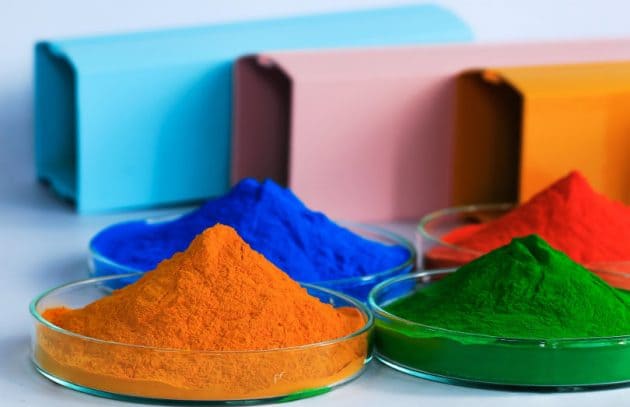
(III) Comparison of aesthetic effects
Spray painting: It has greater flexibility in color, texture and finish, such as high gloss, satin or matte effects. However, under harsh conditions, the finish may wear or fade faster.
Powder coating: Compared with spray painting, although the color selection is relatively limited, it can provide a smoother and more durable surface, and it is not easy to fade. It can maintain the appearance for a long time, which is very suitable for surfaces that require long-term beauty. In terms of long-term beauty and durability, powder coating has more advantages, but spray painting is more flexible in surface treatment and color selection.
(IV) Comparison of environmental impact and safety
Spray painting: Solvents will release volatile organic compounds (VOCs) into the air, causing environmental pollution, and overspray waste will occur during the spray painting process.
Powder spraying: It is an environmentally friendly process that does not produce volatile organic compounds, and unused powder can be recycled, minimizing waste. In addition, the process is safer for workers and does not require the use of harmful solvents. Powder coatings perform better in terms of environmental protection and safety, especially for industrial applications.
(V) Cost considerations comparison
Spray painting: For small projects, it is usually more cost-effective due to lower material and equipment costs. But more frequent maintenance and recoating may be required, which will increase long-term costs.
Powder coating: The initial installation cost is higher, but the long-lasting protection it provides reduces the need for long-term recoating and maintenance, and is more cost-effective for large projects. Powder coating has a high initial cost, but is more economical in the long run, especially for projects with high durability requirements.
Tips for choosing powder coat vs spray pain
When to Choose Spray Painting
For small projects, complex or detailed work, and when color and surface customization are highly required. It is also suitable for projects where initial cost needs to be controlled and durability is not the primary consideration.
When to Choose Powder Coating
For large projects, industrial applications, or metal surfaces exposed to frequent use or harsh environments. It provides excellent protection, durability and environmental benefits, making it the first choice for projects that require long-lasting performance.
Summary
How to choose between powder coat vs spray pain?For projects that require long-lasting protection and high durability, powder coating is undoubtedly the best choice; for projects that are more concerned with affordable and customizable finishes, spray painting is a practical choice. The choice of coating ultimately depends on the specific needs and environmental considerations of your project. If you need advice in the selection process, please feel free to contact Xavier.
